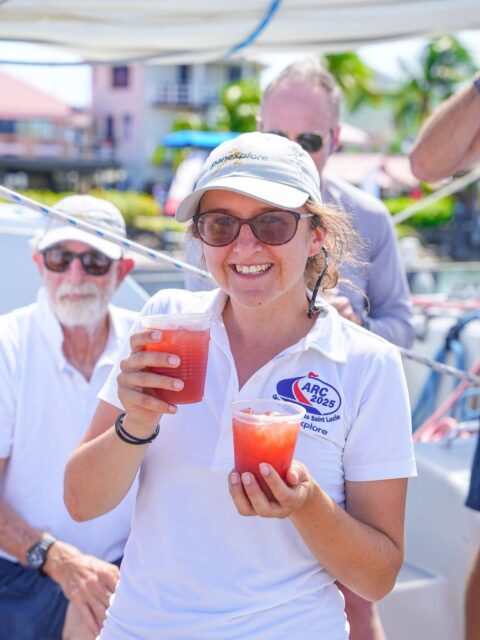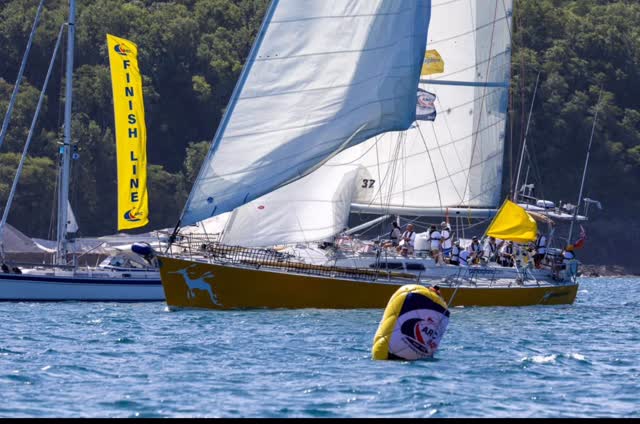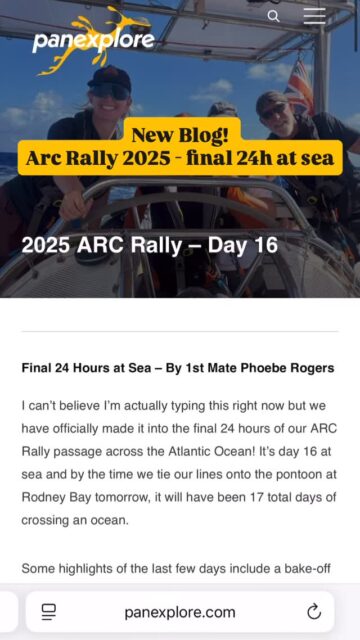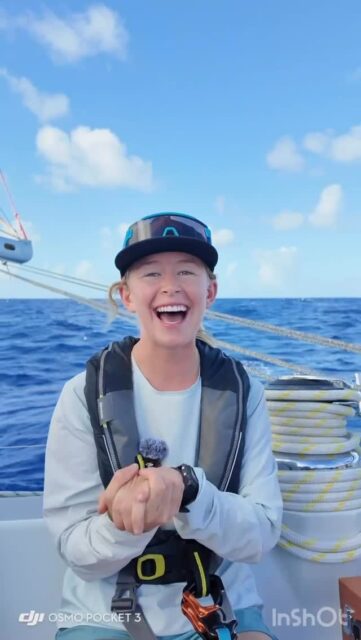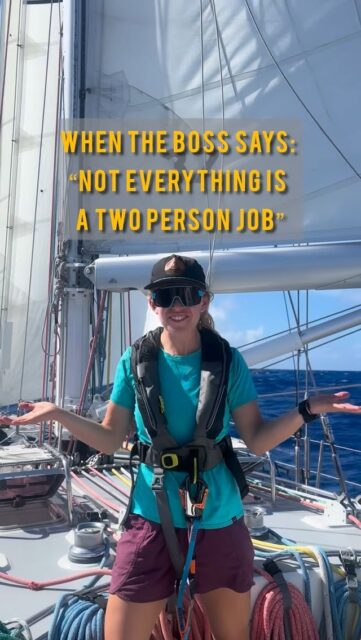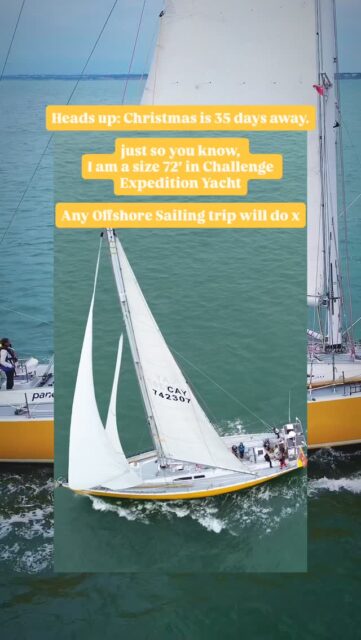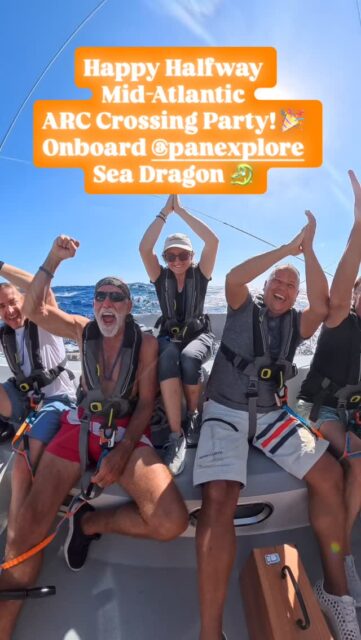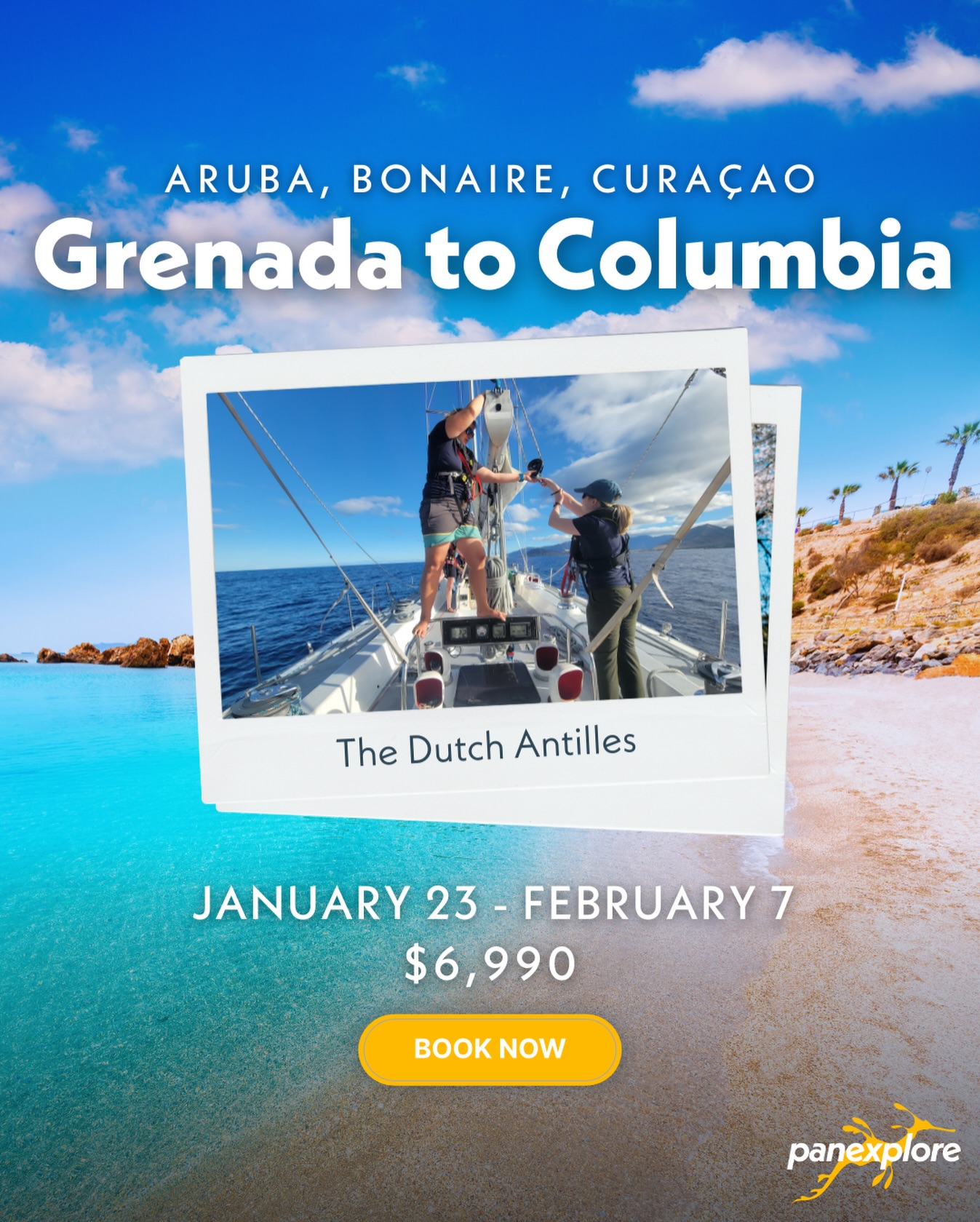Today on the blog, our resident engineer, Jenna, geeks out on Sea Dragon’s infrastructure, specifications, and operations.
There are fourteen of us living on the 72 foot sailboat, with about 600 square foot of living space below. The deck, made up of a large cockpit area near the center, also contains the main sheet (rope for moving the main sail that goes through three pulleys and is wound around a winch). With the winch and pulley system distributing forces, any one of us can pull in or let out the 2,800 to 4,000 square foot sail that rises 96 feet up the mast (unless there is a reef in it, which will be explained later). Towards the back of the boat is a smaller area containing the binnacle (frame to hold the compass) and the helm (steering wheel). The boat is steered like a car, you turn the wheel the direction you want to go; however, very small movements turn the boat and often you turn the wheel father and come back to middle.
Some other terms we have been learning…
Yankee sail, the sail at the very front of the boat that we furl in and out from the forestay (front mast) with the furling lines connected to winches near the helm. The yankee sail can provide extra surface for the wind to push, provide balance, or contribute to proper aerodynamics when the wind is at the front of the boat (when the boat gets propelled forward from changes in air pressure, somewhat similar to an airplane).
Starboard = right side of the boat and Port = left side of the boat.
The ropes that run up the main sail are called halyard lines and they are held in place by clutches (clamps) and can be manipulated with three winches near the bottom of the mast. There are eighteen of these lines, all neatly coiled when not in use in our “snake pit.” In front of the snake pit is the foredeck. These areas are not really places we hang out, but are used for adjusting configurations for efficient sailing. We position the main sail for optimum wind speed without compromising control. When it is out far and the wind is variable, there is a preventer line on it so it doesn’t accidentally come towards the boat or gybe. A controlled gybe is when we pull the main sail in to the middle and switch the side the wind is on. An uncontrolled or accidental gybe would be dangerous (so we use the preventer line).
When we have had large gusts (30 knots or higher), we have had to put in reefs. A reef is when we shorten the main sail so that it has less power (and more control). We can put in up to three reefs. Also on deck, above the helm, are two solar panels and two micro wind turbines, generating renewable electricity for the boat (they charge the battery we use to run all power on the ship). The energy they provide is about 2 amps. The instruments used in the helm tell us both true and apparent wind speed, wind direction, ship speed, ship heading and ships log (total distance traveled). The angle of the wind direction is critical to our heading and sail configuration. For example, we are now heading 265 to get to Martinique, and the wind is behind us at 71 degrees.
The neuston net trawl that we used is stored on the foredeck and deployed with the spinnaker poles, which are available for either side of the boat.
In terms of safety on deck, safety always comes first, and everyone puts on a life vest with a tether that hooks on jack lines running along the deck. There are also four life rafts stored behind the helm that hold 6 people each (for a total of 24, more than our capacity). We have gone through safety briefings on all emergencies, as well. The very back platform holds Jenna’s bin of science equipment and lines above allow us to hang laundry to dry after washing in fresh water in a bucket on deck. The boat weighs 38 tons (displacement) and although we tip nearly vertical, especially in our first few days of heavy winds and high seas, we cannot tip with a 10 foot heel and 10.3 ton ballast.
Ship life below…
At the front of the boat is an area called the forepeak. This area stores extra sails, equipment, and our trash and recycling. Next back are the “heads,” which are the bathrooms. We are told they are called the heads because historically they were at the head of the ships underneath the traditional figurine off the bow… And they were just holes. Now we have toilets in a small room that also doubles as a shower. There are two separate heads. The toilets are manually flushed (using seawater) with a hand pump that must be pumped about 20 times to get through all the piping to discharge the waste, which is allowed into the ocean per international regulations. Nothing goes out but human waste and small amounts of biodegradable toilet paper. The systems are easy to operate and work well even in the roughest conditions. After the heads, there are two sleeping quarters that are also large enough to store our produce and science and filming gear. Beyond those are the galley (kitchen) and salon (sitting area). These are heavily utilized and provide all the comforts of home.
All our meals are made in the galley, and we often gather in the salon to chat. Food scraps are saved in a small pail in the galley and dumped over the side to feed the fishes per regulations. The stovetop is gimbled so that it stays level as the ship rocks from side to side. There is also a small library in the salon with sailing and marine life identification books and also other relative books to our trip like, Plastic: A Toxic Love Story and Garbology. We normally eat our meals on deck in and around the cockpit and the helm.
Beyond the galley and salon is the navigation station and wet locker. The navigation station contains a vhf radio (CB), which is set on the universal communication channel of 16. There are displays that show our current position, heading, wind speed, battery monitor (charge and voltage), and the amps from our solar and wind inputs. There is also a radar for looking a t weather and a paper chart for our journey. The log book is at the nav station, as well. We write a log every single hour (it is the responsibility of the watch team on duty). The log includes position, course, bilge check, log number (distance), person at helm, battery level and voltage, the day tank (fuel pumped up from storage), wind direction and force, and weather conditions (barometer, conditions, sky, visibility, and temperature). To identify boats in close proximity, there is an AIS system that tells us an incoming boat’s position, heading and speed. At night, the boat is lit with green LED lights so our night vision is not compromised.
The wet locker holds all our outdoor foul weather gear, life jackets, and shoes. It also contains the water maker, which turns seawater into fresh water used for drinking, showering, and cooking. The water is filtered through 20 micron and 5 micron filters, then drinking water through an additional carbon filter. Beyond the wet locker and nav station are more sleeping quarters. Everyone has their own bunk and cubby. There is also a small computer station (which is almost directly under the helm).
Below the living quarters are the mechanics of the ship and bilges. The fuel is also stored below. The engine is a Perkins Sabre 130 horsepower engine, which is only used if absolutely necessary. Diesel also runs the Fisher Panda 12 Watt generator, which charges our battery bank as needed.
Some halfway statistics:
1 bag of recycling (stored)
2 bags of trash (stored)
7 buckets of food waste to the fish
An estimated 280L of wastewater (2L/person/day)
637L of diesel fuel used (for the generator and for powering the boat in too little wind)
This post is dedicated to the students in the Environmental Engineering program at the University of Georgia, especially those in ENVE 3320, Urban Systems.
– Jenna Jambeck, eXXpedition crew, November 26th, 2014

